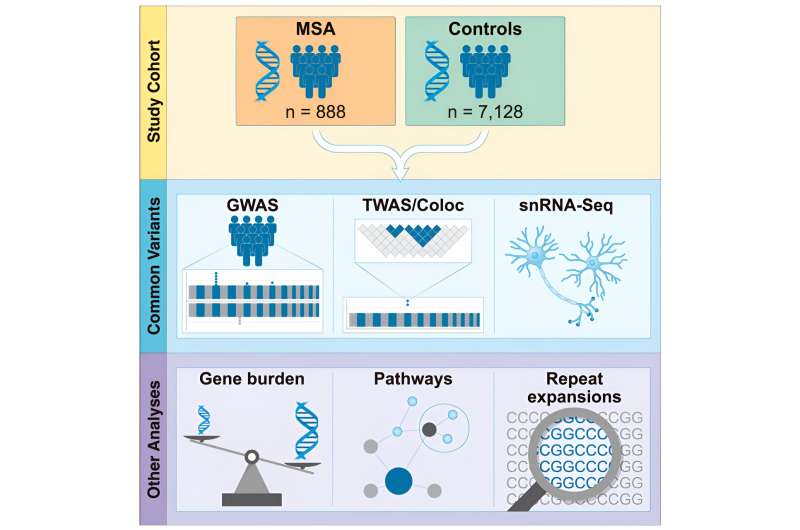
In a study published in Neuron, researchers have identified four new genetic risk factors for multiple system atrophy (MSA), shedding light on this poorly understood disorder. The study, which involved collaboration from over 50 institutions worldwide, including the Uniformed Services University of the Health Sciences (USU), marks a significant step forward in the understanding of MSA.
Led by Sonja W. Scholz, M.D., Ph.D., senior investigator and chief of the Neurodegenerative Diseases Research Section at the National Institute of Neurological Disorders and Stroke (NINDS), the project utilized the expertise of The American Genome Center at USU, among others, to analyze the entire genomes of individuals with MSA.
MSA is an adult-onset sporadic disorder characterized by an abnormal buildup of ?-synuclein protein, similar to Parkinson’s disease and Lewy body dementia. However, due to its rarity and variability in symptoms, MSA remains poorly understood.
To address this knowledge gap, the research team assembled the largest whole genome dataset for MSA to date, involving 888 individuals of European ancestry with MSA. By comparing their genomic variation to those of healthy controls, the team identified four new risk loci for MSA and highlighted specific genes associated with increased susceptibility to the disorder.
The American Genome Center at USU directed the high quality genomic data generation and analysis for the study as part of ongoing collaborative efforts led by Dr. Clifton Dalgard, director of USU’s Center for Military Precision Medicine which oversees TAGC, to support neurodegenerative and neurological disease population genetics research with NINDS and NIA.
In addition to genome analysis, the researchers conducted cell-type specific transcript expression analysis to understand the potential impact of genomic changes on specific cell types, such as neurons and oligodendrocytes. This analysis revealed that defects within oligodendrocytes may play a significant role in MSA pathogenesis as a primary oligodendropathy.
Despite the study’s limitations, including the need for replication in additional MSA cohorts with genomic data, the team is sharing their data freely with the research community to support further investigations into MSA and facilitate the development of targeted treatments.
“We are proud to have contributed to this effort aimed at unraveling the genetic determinants of MSA,” said Dalgard. “By working collaboratively, we hope to accelerate research progress towards effective treatments for this debilitating neurodegenerative disease.”
More information:
Ruth Chia et al, Genome sequence analyses identify novel risk loci for multiple system atrophy, Neuron (2024). DOI: 10.1016/j.neuron.2024.04.002
Provided by
Uniformed Services University of the Health Sciences
Citation:
Research team identifies four new genetic risk factors for multiple system atrophy (2024, May 8)
team-genetic-factors-multiple-atrophy.html
.
. The content is provided for information purposes only.
